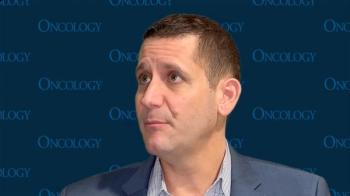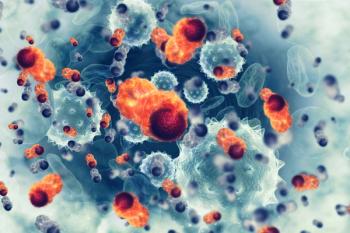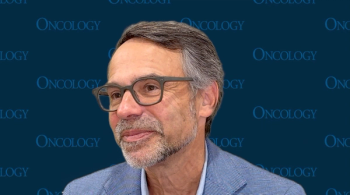
Capivasertib Plus Fulvestrant Yields PFS Improvement in HR+/HER2– Breast Cancer
Results from the phase 3 CAPItello-291 trial indicated that the combination of capivasertib plus fulvestrant produced improved progression-free survival in patients who have hormone-receptor–positive/HER2-negative advanced breast cancer.
Progression-free survival (PFS) was significantly improved in patients with hormone-receptor–positive/HER2-negative advanced breast cancer—including those with AKT pathway–altered tumors—who were treated with capivasertib plus fulvestrant vs placebo, according to results from the phase 3 CAPItello-291 trial (NCT04305496) that were presented during a press conference at the
The median investigator assessed PFS was 7.2 months (95% CI, 7.2-7.4) among those who received capivasertib plus fulvestrant vs 3.6 months in the placebo plus fulvestrant arm (95% CI, 2.8-3.7; HR, 0.60; 95% CI, 0.51-0.71; 2-sided P < .001). In patients who had AKT pathway mutations, the median PFS was 7.3 months (95% CI, 5.5-9.0) in the capivasertib arm vs 3.1 months (95% CI, 2.0-3.7) in the placebo arm (HR, 0.50; 95% CI, 0.38-0.65; 2-sided P <.001). In the non-altered population, the investigator assessed PFS was 7.2 months (95% CI, 4.5-7.4) in the capivasertib arm vs 3.7 months (95% CI, 3.0-5.0) in the placebo arm (HR, 0.70; 95% CI, 0.56-0.88). When PFS was assessed across prespecified patient subgroups, investigators reported a consistent benefit in all groups.
“The improvement in progression-free survival with relatively well-tolerated [adverse] effects is extremely encouraging,” Nicholas Turner, MD, PhD, lead author of the study said. “We are hopeful that capivasertib will become a new treatment option for patients whose cancer has progressed on a regimen containing an endocrine therapy.”
A total of 708 patients in the overall population were randomly assigned 1:1 to either the capivasertib plus fulvestrant (n = 355) arm or the placebo plus fulvestrant arm (n = 353). A total of 155 and 134 patients in each arm, respectively, had AKT pathway–altered tumors. Patients in the experimental cohort received 400 mg of capivasertib twice daily for 4 days on and 3 days off plus 500 mg of fulvestrant during cycle 1 on days 1 and 15 then every 4 weeks thereafter. Additionally, the control arm received matched placebo plus the same fulvestrant backbone.
The primary end points were PFS by investigator assessment both in the overall population and those with AKT pathway tumors, while secondary end points included overall survival (OS) and ORR.
In the overall population (80.6% vs 71.4%) and among those with AKT-altered tumors (83.9% vs 71.6%), the majority of patients in the capivasertib vs placebo arms, respectively, received 1 prior line of endocrine therapy. Additionally, most patients in the overall population (69.0% vs 69.1%) and AKT-altered population (72.9% vs 67.9%) previously received a CDK4/6 inhibitor across both respective treatment arms. Approximately half of patients in the overall (50.7% vs 48.2%) and AKT-altered populations (51.0% vs 50.0%) who were treated with capivasertib and placebo, respectively, were previously treated with adjuvant/neoadjuvant therapy.
The planned OS analysis had reached 28% maturity at the time of the presentation, with a hazard ratio of 0.74 (95% CI, 0.56-0.98) in the overall population and 0.68 (95% CI, 0.45-1.05) in the AKT altered–pathway group.
Common adverse effects of grade 3 or higher in those receiving capivasertib vs placebo, respectively, included diarrhea (9.3% vs 0.3%), maculopapular rash (6.2% vs 0.0%), rash (5.4% vs 0.3%), hyperglycemia (2.3% vs 0.3%), and stomatitis (2.0% vs 0.0%). The safety profile was similar for the AKT-altered group.
Reference
Turner N, Oliveria M, Howell SJ, et al. Capivasertib and fulvestrant for patients with aromatase inhibitor-resistant hormone receptor-positive/human epidermal growth factor receptor 2-negative advanced breast cancer: results from the phase III CAPItello-291 trial. Presented at the 2022 San Antonio Breast Cancer Symposium; December 6-10, 2022; San Antonio, TX. Abstract GS3-04.
Newsletter
Stay up to date on recent advances in the multidisciplinary approach to cancer.
















































































